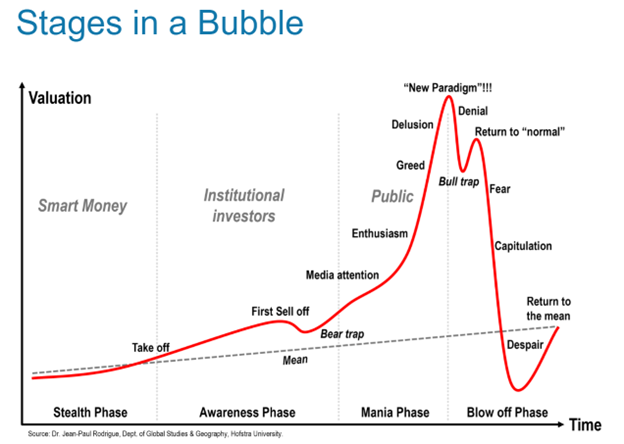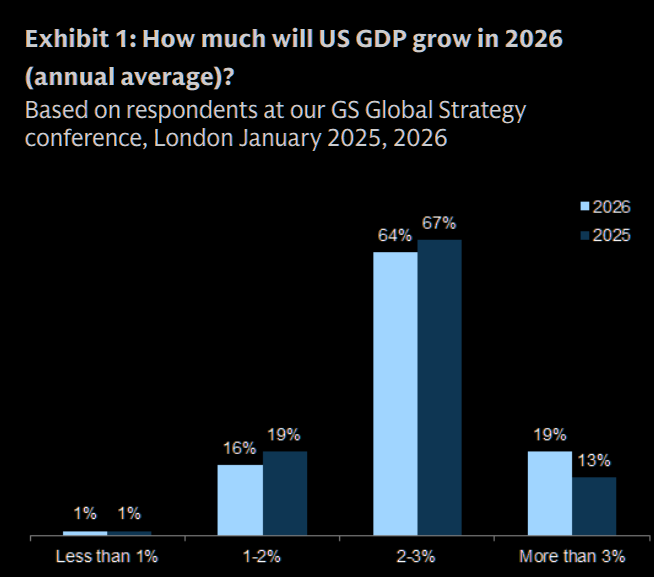There were several developments last week that shape the investment climate. First, the September US employment report was stronger than expected and this reinforces the message from Fed Chair Powell. After initiating the easing cycle with 50 bp cut, the central bank is not in a rush and two quarter-point cuts in Q4 is most likely scenario. Once again, the market has converged to the Fed rather than the other way around. Second, the new Japanese government and the Bank of Japan are cautious about near-term rate hikes. The market has pushed the next move into 2025. Third, the eurozone's preliminary September CPI fell below 2%. This boosts the chances of an ECB rate cut when it meets on October 17. Fourth, Bank of England Governor Bailey hinted at an acceleration of BOE cuts. This weighed on sterling, but the swaps market assessment of a roughly 60% chance that the BOE cuts rates by 50 bp in Q4 was little changed on the week. Fifth, although mainland Chinese markets have been on holiday starting October 1, the index of companies that trade in Hong Kong rose by 8.6%. The Golden Dragon Index of Chinese companies that trade in the US rose nearly 10.5% last week after surging 24% the previous week. Sixth, the Israel's invasion of Lebanon and Iran's missile strikes on Israel warn of a broadening and deepening of the multifaceted conflict. At the same time, US oil inventories are the lowest in 2 1/2 years. The price of November WTI trading above $75 a barrel ahead of the weekend for the first time since the end of August.
The US September CPI on October 10 is the most important high-frequency economic data point in the week ahead. A 0.1% increase in September would see the year-over-year rate slip to 2.3% from 2.5%. The three-month annualized pace would be 2%. The core remains stickier but will not stand in the way of further easing by the Fed. China's markets re-open on Tuesday form the week-long holiday. There is some speculation that Beijing has not exhausted its new initiatives. The Reserve Bank of New Zealand meets on October 9 and the swaps market has nearly a 75% chance that it delivers a 50 bp cut discounted. The UK reports August GDP on October 11. It could be the first monthly expansion in three months. Canada's September labor market update is at the end of the week, and it is expected to have grown around 36k jobs last month, which is a little better than this year's average.
United States: The September job growth was stronger than expected and the unemployment rate ticked lower. There will be another jobs report before the November FOMC meeting. The market scale back speculation of a 50 bp rate cut this year. Attention now turns to the CPI report (October 10). The headline CPI likely rose by about 0.1% in September, and given the base effect, the year-over-year rate would ease to 2.1% from 2.5%. At a three-month annualized rate, the headline rate likely rose 2% in Q3. The core rate, as we know, is a bit stickier. A 0.2% rise would see the year-over-year rate slip to 3.1% from 3.2%. At a three-month annualized rate, core CPI would have risen by around 2.8%. The September PPI is due the next day, and typically elicits less of a market response. Even when explaining the logic behind the 50 bp cut, Fed Chair Powell (and Governor Waller) cited CPI and did not even mention PPI. August trade and inventory data will also be reported. We already know that the goods balanced improved. The US deficit does not mean that the US is a weak exporter. At around $2 trillion, US exports are only second to China. US goods imports slipped but consumer goods imports increased, and this may reflect the desire to secure supplies in the face of potential disruptions, including the dockworkers strike. The trade report and inventories will help economists sharpen the forecasts for Q3 GDP, which appears to be tracking around 3%. The FOMC minutes from the recent decision to initiate the easing cycle with a 50 bp rate cut will be released. Was the Fed panicking like some critics say who think the Fed should have cut rates in July or can we accept Powell and Waller at face value that the CPI shifted the call from 25 bp to 50 bp?
The Dollar Index snapped a four-week drop with its strongest weekly advance in two years (~2.2%). It rose every session last week for the first time since April 2022. The Dollar Index nearly reached 102.70 before the weekend. It has forged a base that could target the 104.00 area. Still, some consolidative pressures may emerge at the start of the new week. Support may be found in the 102.20 area.
Eurozone: Last week's CPI supported the speculation that had been growing in favor of another ECB rate cut later this month after the September cut. The only aggregate data point of note in the coming days is August retail sales. They do not typically move the markets. Through the first seven month of the year, eurozone retail sales have been flat on average, the same as the January-July period in 2023. German factory orders and industrial output figure are due but with the Bundesbank's recent warning that the economy may contract in Q3 (after a shrinking 0.1% in Q2), may take the sting out of soft data. France, Spain, and Italy reported a small increase in August industrial production. German and French trade figures in aggregate the shock associated with Russia's invasion of Ukraine has been absorbed. The eurozone had a current account surplus of 2.4% of GDP in 2019. It fell to -0.3% in 2022 and is on track for around 2.5% this year.
The stronger than expected US jobs data drove euro through $1.10, the neckline of a possible double top pattern than projects to $1.08. That seems like a deep retracement, and we suggest an initial target of $1.0900-$1.0910. Down six consecutive sessions, the euro may need to consolidate. The $1.10 area may now offer resistance.
Japan: The formalities are complete, and Japan has a new prime minister. Ishida is inheriting an economy that enjoys some forward momentum and has escaped the grip of deflation. The budget deficit is projected to decline from around 5.5% of GDP this fiscal year to around 4.8% next year. Monetary policy will likely gradually become less accommodative (rates and the BOJ balance sheet). There is speculation that Ishida will seek to secure his own popular mandate by calling for early elections. The main opposition party, the Constitutional Democratic Party, picked a former LDP official to lead it into the election. Noda is regarded as a skilled debater and will give Ishida a robust challenge. Japan reports labor earnings and household spending. While labor earnings have risen 3.4% the year through July, household spending has risen by 0.1%. It is true that when adjusted for inflation, labor earnings have risen by a slight 0.4%. The June and July increase was the first in over two years. Japanese households continue to have a high propensity to save and a low propensity to consume. Japan runs a current account surplus and a trade deficit. Typically, both deteriorate in August. The current account report also contains a breakdown for portfolio flows by country. In aggregate, Japanese investors have been significant buyers of foreign bonds in recent months. They have been buyers of foreign equities, but less so. For their part, foreign investors have been small net buyers of Japanese bonds over the past two months, but bigger sellers of Japanese equities.
The jump in the US 10-year yield following the stronger than expected US jobs report lifted the greenback to JPY149, its best level since mid-August. The bottoming pattern projects toward JPY150-JPY151. Some are talking about new yen carry-trades, but one of the features of a funding currency is low volatility (alongside low interest rates). Three-month implied yen vol is near 11.8%, highest among the G10 currencies.
China: After a week-long celebration, Chinese markets re-open on October 7. The large package of measures announced in late September, before the holiday, have broken the "un-investible" narrative. Being underweight China equities means one is likely underperforming benchmarks. The interest rate cuts have undermined the popular strategy of foreigners swapping dollars for CNH and buying bank certificates of deposit. After Japanese officials helped spur a short-covering rally in the yen, Chinese officials have managed to do roughly the same. The weakness of the yuan had encouraged Chinese companies to hold on to the foreign currency earnings, but the yuan's rally has spurred repatriation--the sale of dollars. Beijing is taking more measures to support house prices and the property market. It appears many, if not most, foreign observers are skeptical that the latest measures will suffice. Fully cognizant of the gap between declaratory policy (what is said) and operational policy (what is done), the idea that central bank will help fund share buybacks and a new more supportive stance and assistance for industry consolidation may be under appreciated efforts could contribute to structural change, of which many are skeptical.
The US dollar will begin the new week with a six-session advance against the offshore yuan in tow. It approached CNH7.10 in the wake of the US employment data that sent rates higher and the yen lower. The next important chart area is CNH7.14-CNH7.15. When the mainland closed, the dollar was near CNH7.0.
UK: The Bank of England's patience will be tested with the monthly August GDP figures. The economy stagnated in June and July. In fact, since the end of Q1, the monthly GDP has risen in only one month, May). Industrial production was practically flat in Q2 before falling 0.8% in July, led by a 1% contraction manufacturing output. Construction was up around 1.2% in Q2 before falling by 0.4% in July. Services have risen steadily by about 0.1% a month. Net exports have been a drag. In fairness, the monthly GDP report is not as impactful as the employment report (Oct 15) and CPI (Oct 16). Also, what is at stake now is not so much a cut next month; that is a foregone conclusion still, but whether there will be another cut in December. The UK is the high yielder among the G7 countries, and its two-year yield reached nearly 40 bp premium it offers on top of the US is the most in over a year before falling back to around 25 bp before the weekend. The UK's two-year premium over Germany has jumped from a little below 120 bp in mid-August to around 190 bp now. The dramatic rate adjustment helps explain sterling's outperformance.
Sterling had a tough week. Between, Bank of England Governor Bailey suggesting the pace of easing could accelerate and the rise in US rates, sterling shed 2.2%, the most in a week since February 2023. Its four-day fall took it from $1.3375 at Monday's close to $1.3070 after the US employment report. Support is seen in the $1.3000-$1.3050 area. A convincing break spur another two-cent decline.
Canada: There seems to be a low bar to a 50 bp rate cut by the Bank of Canada when it meets later this month (Oct 23). Barring a surprise in the September CPI (Oct 15), it is the most likely scenario. The August merchandise trade balance and the September employment data will not stand in the way. Canada's goods trade deficit has narrowed this year through July to about C$1.4 bln from around C$4.9 bln in the first seven months of 2023. Canada's labor market is slowing. Through August, full-time job growth is running at about a third of the pace as a year ago, and the unemployment rate has risen from 5.7% in January to 6.6%. Political pressures on the minority Liberal government are building and Prime Minister Trudeau may face another confidence vote at the end of the month or early November, and the Bloc Quebecois is threatening to vote against it.
The Canadian dollar lost about 0.4% against the US dollar last week, making it the best performing G10 currency. The Canadian dollar typically trades higher on the crosses in a firm US dollar environment. After bottoming in late September near CAD1.3420, the greenback reached almost CAD1.36 ahead of the weekend, where the 200-day moving average is found. The CAD1.3620 and then CAD1.3650 offer initial resistance.
Australia: If the Bank of Canada is among the most dovish of the G10 central banks, the Reserve Bank of Australia is among the least dovish. Governor Bullock insists that it is too early to consider a rate cut, and the market is gradually coming around. Pricing in the futures market is consistent with about a 45% chance of cut by the end the year, down from around 70% a week ago. Minutes from the recent RBA meeting will be released on Oct 8. The RBA's statement dropped the reference to a discussion about hike rate, but the underlying message likely remains similar. The Reserve Bank of New Zealand is a different story. The RBNZ meets on October 9. The swaps market is discounting almost a 75% chance of a half-point cut. It is one of two meetings in Q4, and the market has 94 bp of cuts priced in this year.
The Australian dollar peaked at the start of last week near $0.6940 and finished straddling $0.6800. On the pullback, the Aussie approached the halfway mark of its rally since September 11 found near $0.6780. A break of that area could signal a move toward $0.6750, and possibly $0.6700. Resistance now may be encountered near $0.6840. The New Zealand dollar was thumped for 2.8% last week to slightly below $0.6150. Support may be found in the $0.6100-$0.6115 area, and a break could see $0.6050.
Mexico: The restrictive monetary policy is slowing Mexico's economy. Inflation peaked two years ago near 8.7% to around 5%. The core rate peaked near 8.5%. It has fallen every month since February 2023 and by August had been more than halved. We already know price pressured moderated further in the first half of September. There are two Banxico meetings in Q4 and two quarter-point rate cuts is the most likely scenario. The peso rose every session last week for a cumulative gain of about 2.8%. The greenback rose to MXN19.83 as Sheinbaum was inaugurated on October 1 and approached MXN19.11 before the weekend. Last month's low was near MXN19.09. The dollar has not settled below MXN19.00 since August 20.
Tags: Featured,macro,newsletter



































